Can You Repair the Sidewall of a Tire? Expert Advice
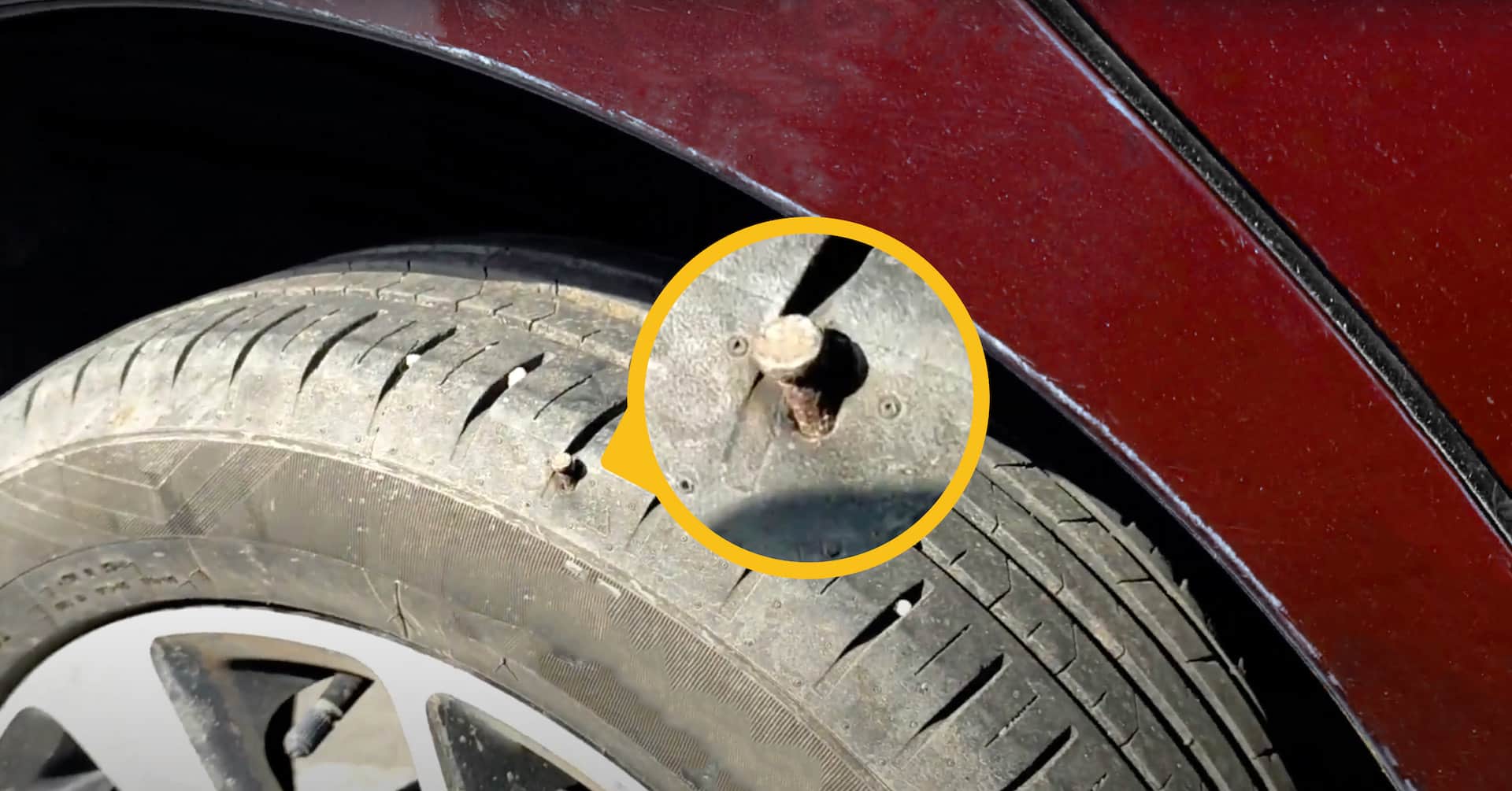
It’s true that repairing a tire is cheaper than having to replace the whole tire and in most cases, a good repair can last for the tire’s lifetime. However, it’s important to understand where the limits lie.
Just like with any other repair, there are certain precautions that need to be taken in order to guarantee a safe solution. So, can you repair the sidewall of a tire?
Tires – the only point of contact with the road
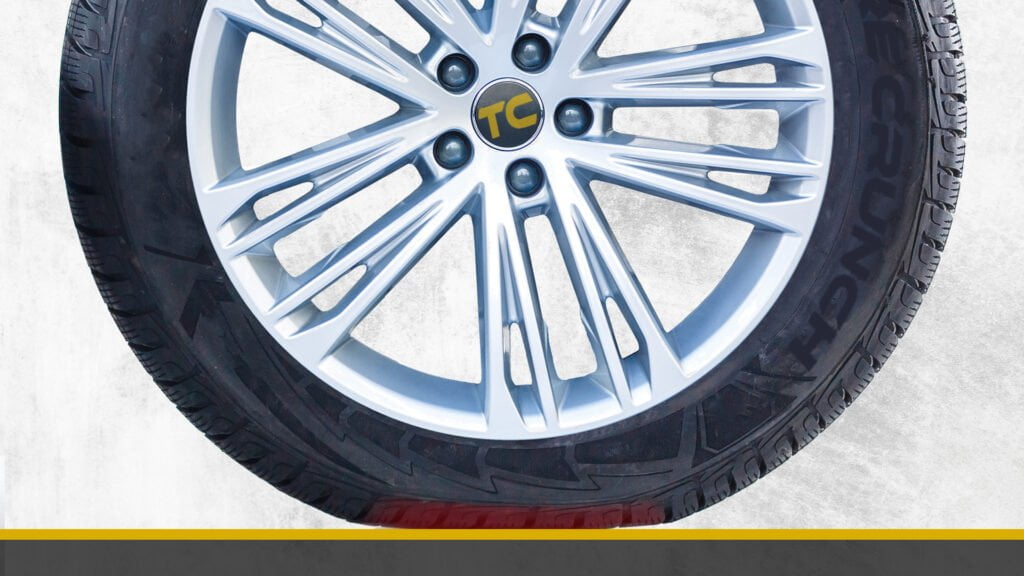
Tires are one of the most important components of any vehicle, and they’ve come a long way since the early days of automobiles.
Nowadays, tire technology has progressed massively, leading to stronger, more durable, and safer tires that can withstand different driving conditions.
The two external parts of a tire are the tread and the sidewall:
- The tread is the part of the tire that contacts the road. It’s very thick and is designed to wear down gradually over time.
- The sidewall of the tire, also called the tire wall, is much thinner than the tread. It flexes as the tire rotates and bears the weight of your vehicle. It also protects the inner structural plies of the tire.
Can you repair sidewall damage?
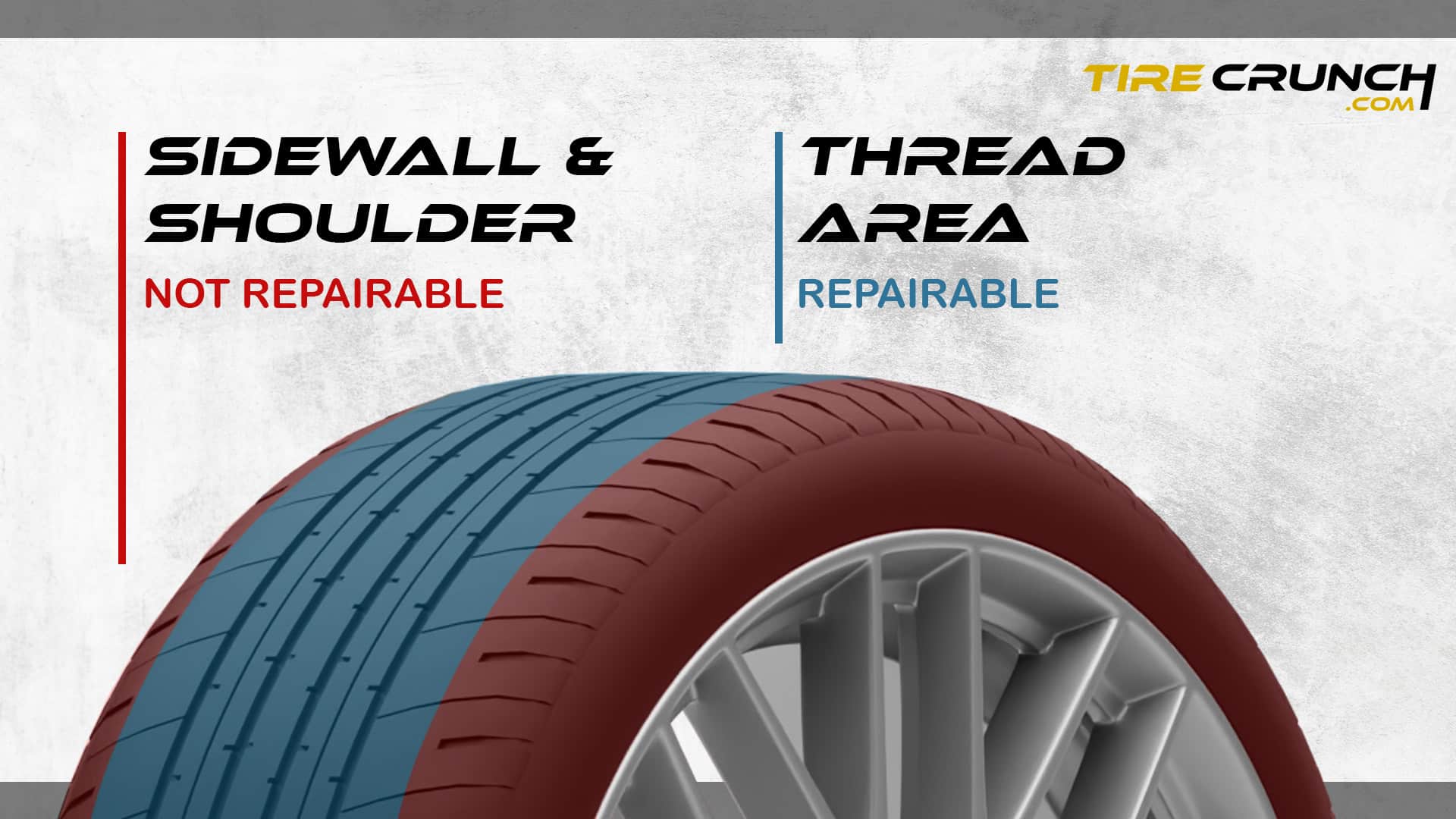
Unfortunately, sidewall damage on a tire CAN'T be repaired.
Though repairing a tire is generally considered safe, the sidewall of the tire is off-limits for repairing. As such, many tire-repair shops will not attempt to patch a sidewall for liability reasons.
Why tires with punctured sidewalls can’t be repaired
Sidewalls are NOT repairable for a simple reason: when the tire is in operation, this part of the tire undergoes extreme stress and any attempts to repair it could compromise its structural integrity.
Besides this, the sidewall is the part that experiences the most flex. It has no cords that run along like there are in the tread, making it impossible to create a lasting seal.
As such, any repair attempts on the sidewall will likely not hold and the tire may continue to leak air.
When you have sustained a sidewall puncture, the best and safest thing to do is replace the tire. Continuing to drive with a sidewall puncture can cause your tire to experience a blowout at even slow speeds, posing a serious risk of injury for yourself, passengers, and other drivers on the road.
What to do if you discover sidewall damage?
What causes damage to your sidewall?
Damage to the sidewall of your tires can be caused by a variety of factors:
Other reasons why your tire sidewall may become damaged include due to structural issues, age, wear, or any other form of impact break.
Types of Sidewall damage
Damage to the sidewall of your tires can come in many forms:
1. Cuts and tears
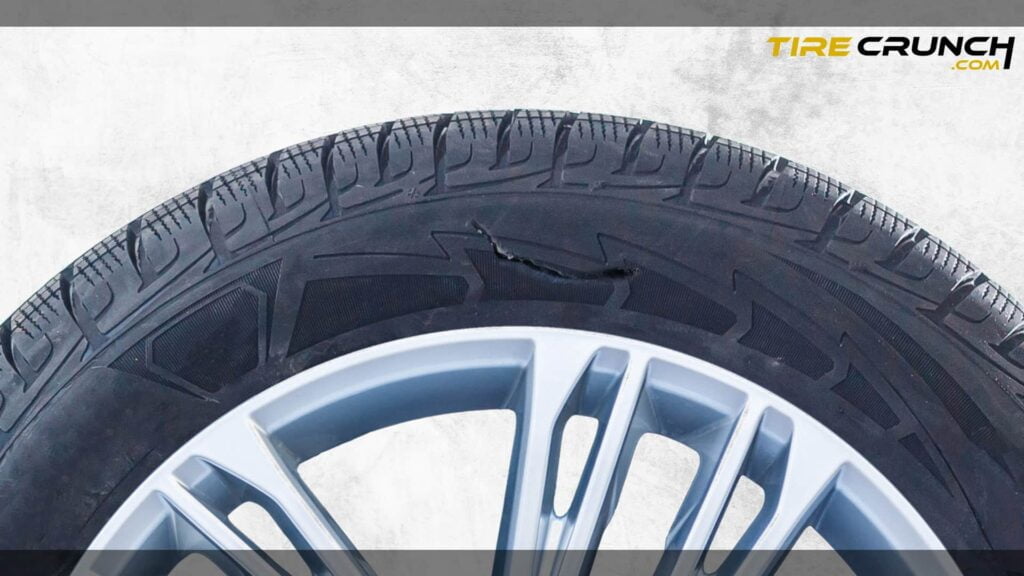
Road conditions and debris such as stones, glass, or other objects can easily cause cuts and tears in your tires.
If you notice any damage to your tires, it’s important to take them to a trusted tire professional right away so they can be examined and repaired or replaced if necessary.
2. Scuffs
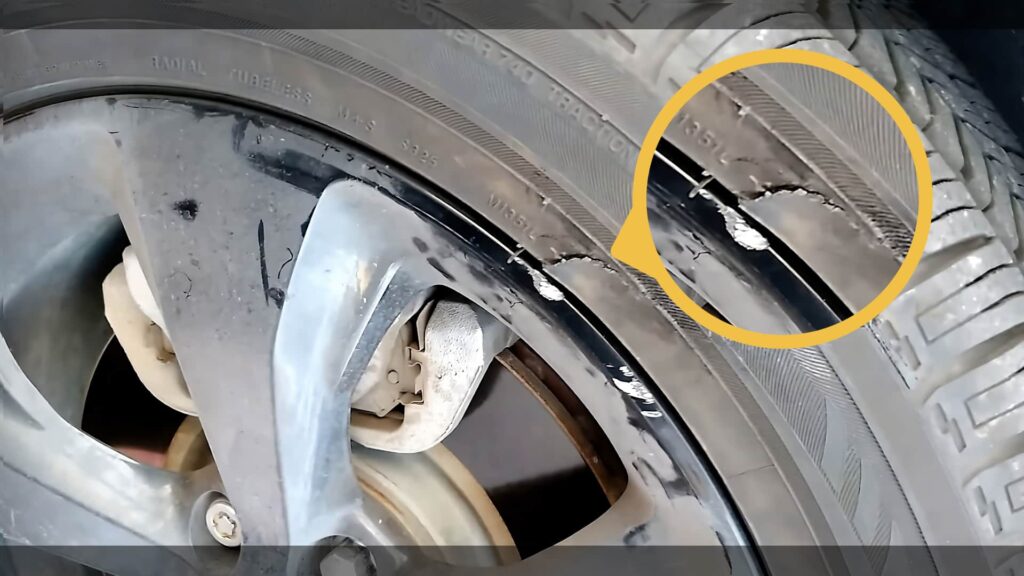
Not only can scraping the curb cause damage to your wheels, it can also damage your tires. Even a light scuff can cause problems in the future, so it’s important that any scrapes you notice are inspected by a tire professional.
They can determine what needs to be done to make sure that the sidewall of the tire is not compromised and ensure you’re able to drive safely.
3. Cracks
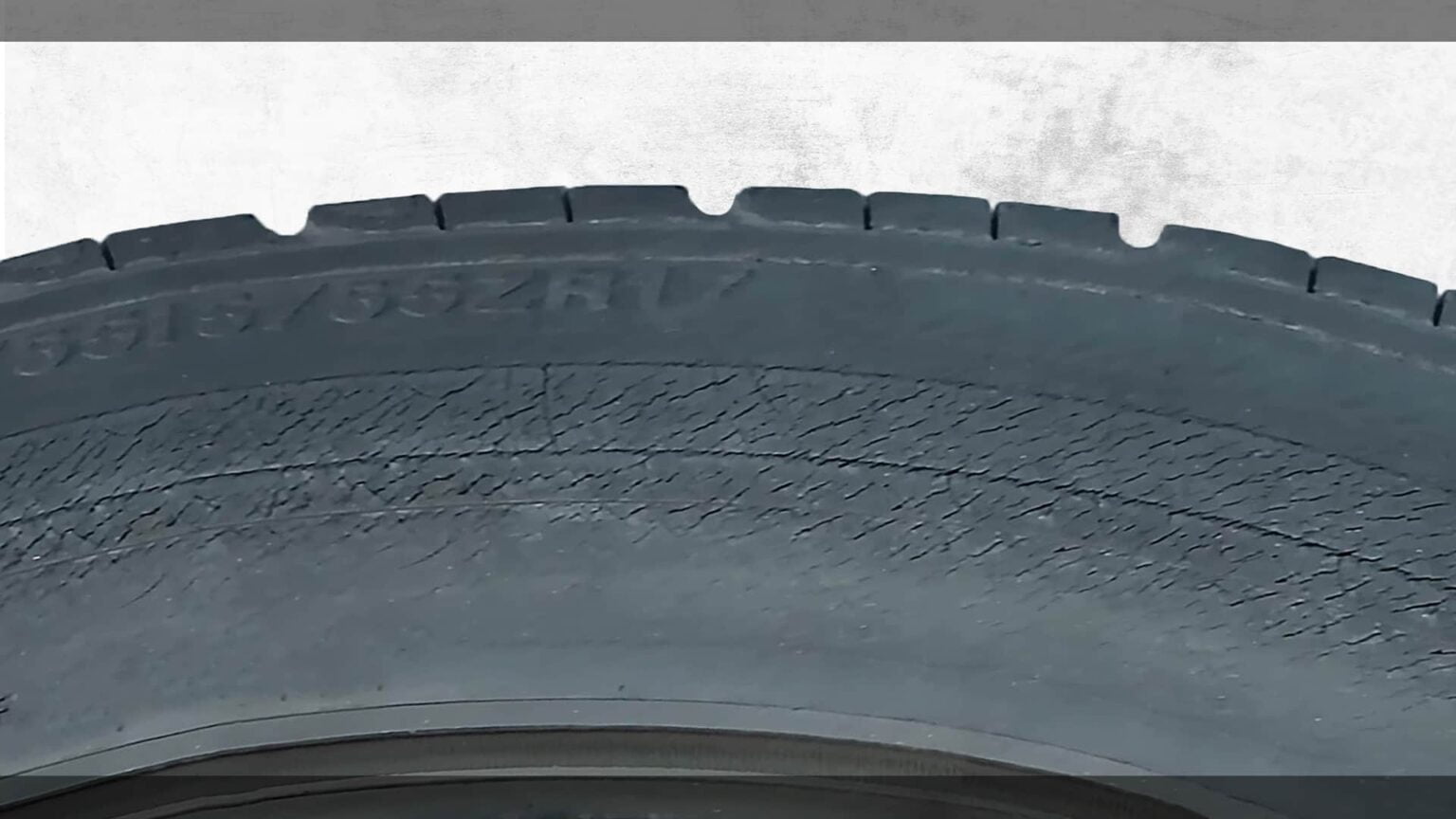
Sidewall cracks can form due to age, exposure to UV rays, chemicals, or drastic temperature changes.
4. Bulges
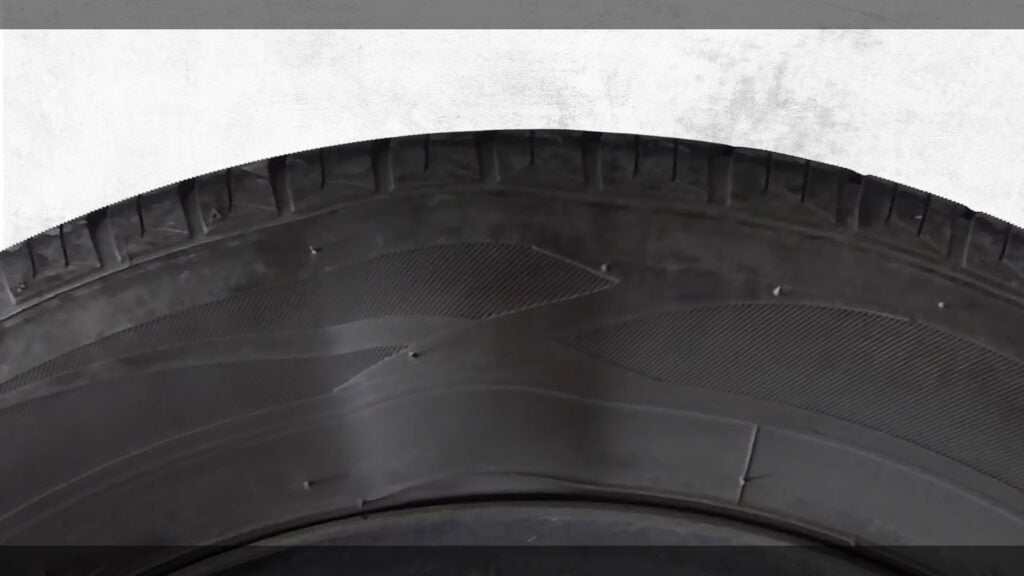
Bulges and bubbles are two common issues that can occur on the sidewall of a tire. Overinflating your tires or catching the curb can lead to damage affecting the internal structure, leading to bulges and bubbles forming. These problems should not be taken lightly, as they can lead to a blowout.
Why a tire bulge Is Especially dangerous?
A bulge in a tire can be dangerous for many reasons. As the carcass ply behind the rubber has been punctured, it is exposed to a rapid loss of pressure if the bubble bursts.
If this happens while driving at high speeds, such as on highways, the sudden decrease in air pressure can cause you to lose control of your vehicle and put you at risk of an accident.
A bulge can occur on both the outer and inner sides of tires, which makes it difficult to spot while inspecting your vehicle.
However, when there is a bulge, it’s usually accompanied by abnormal vibrations that should not be ignored – indicating that your tires should be looked at and possibly replaced immediately by a certified mechanic.
How to prevent sidewall damage
There are a number of ways to help protect your tires from sidewall damage.
Can you drive with a damaged sidewall?
It’s not recommended to drive with any signs of sidewall damage, particularly bulges or cuts, as this can severely affect the structure of the tire.
Damage to the sidewall can indicate a larger issue with the tire, which could lead to a blowout.
Can any type of tire be vulnerable to damage on the sidewall?
All types of tires are just as susceptible to sidewall damage, regardless of whether you’re using regular summer, winter or all-season tires.
However, when the wrong season tires are used (such as summer tires in the winter), they can be at risk of cracking due to their inability to handle the cold temperatures.
To avoid this type of damage, always make sure you’re using the right seasonal tire for your current conditions.
The Importance Of Sidewall Integrity
The sidewall of a tire plays a crucial role in the overall performance and safety of the vehicle. The materials used to create sidewalls are typically thinner and more flexible than those used for the tread area, allowing them to absorb impact from obstacles on the road such as curbs or potholes.
Without proper sidewall integrity, tires can easily become damaged or lead to a blowout while driving at high speeds.
This is particularly dangerous if it occurs on a busy highway where other vehicles are traveling nearby.
How to check your sidewalls for damage
Keeping your tires clean and free of dirt or debris is the first step to spotting any imperfections or signs of damage.
Conduct a thorough visual inspection of your tire sidewalls every two weeks, looking for any cuts or bulges.
Make sure to check your air pressure and tread depth during each inspection too. With regular checking, it will be easy to spot any abnormalities in the sidewall before they become more serious and potentially result in a flat tire.
In what other cases a tire can not be repaired
It’s important to know when it’s safer to replace your tires than to repair them. Repairing a tire may sometimes be more affordable than replacing it, however, certain scenarios call for the latter option.
Note: If you’d like to read more, visit US Tire Manufacturers Association for Puncture Repair Procedures for Passenger and Light Truck Tires
Final Words
Sidewall punctures on a tire cannot be repaired, and continuing to drive with a punctured sidewall can cause the tire to experience a blowout, posing a serious risk of injury.
It is important to get any signs of damage inspected by a tire professional immediately, as neglecting them could have serious consequences for your car’s performance and safety.
